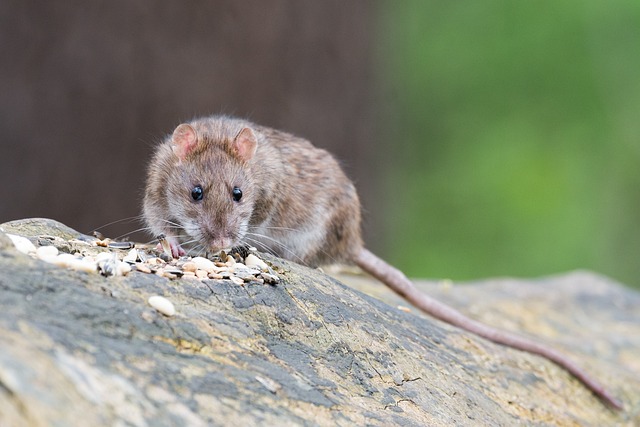Rats, those stealthy and elusive creatures, have been a persistent nuisance for humans throughout history. Their ability to adapt, reproduce rapidly, and outsmart traditional pest control methods has led to a continuous battle between humans and rats. However, a new breed of experts, known as “rat whisperers,” have emerged to tackle this challenge. In this article, we will explore the art and science behind rat control, diving into the techniques, knowledge, and skills employed by these specialists. By understanding the methods of rat whisperers, we can gain insights into effective rat control strategies that go beyond traditional approaches.
I. The Role of Rat Whisperers
Rat whisperers, also known as rat control specialists or pest management professionals, possess a unique set of skills and expertise that enable them to effectively manage rat infestations. They combine scientific knowledge, practical experience, and an understanding of rat behavior to devise targeted solutions tailored to specific environments.
A. Knowledge of Rat Behavior
Rat whisperers have an in-depth understanding of rat behavior, including their biology, communication, and social structure. They study the habits and instincts of rats to anticipate their movements, preferences, and vulnerabilities. This knowledge allows them to develop effective strategies for locating nests, identifying entry points, and implementing control measures.
B. Application of Science and Technology
Rat control specialists employ scientific principles and cutting-edge technology to enhance their work. They utilize advanced surveillance systems, motion sensors, and tracking devices to gather data on rat activity. This data-driven approach helps rat whisperers analyze patterns, assess the extent of infestations, and make informed decisions about control methods.
II. Assessing the Infestation
Before implementing control measures, rat whisperers conduct thorough assessments to determine the scope of the infestation and identify contributing factors. This step is crucial for developing a targeted and effective control plan.
A. Site Inspection
Rat whisperers begin by conducting a comprehensive site inspection to assess the extent of the infestation. They examine both interior and exterior areas, looking for signs of rat activity, such as droppings, gnaw marks, burrows, and nesting materials. By understanding the rats’ access points and preferred hiding spots, they can strategize the most effective control methods.
B. Identifying Contributing Factors
Rat whisperers also investigate the factors that contribute to the infestation. They analyze environmental conditions, such as food sources, water availability, and shelter options, to understand why rats are attracted to the area. By addressing these contributing factors, they can create an environment that is less conducive to rat survival and reproduction.
III. Implementing Rat Control Strategies
Rat whisperers employ a range of control strategies, utilizing a combination of methods to achieve the best results. These strategies often involve a multi-faceted approach that targets rats at different stages of their lifecycle and disrupts their ability to thrive.
A. Exclusion and Entry Point Sealing
One of the primary techniques used by rat whisperers is exclusion. They identify and seal off entry points, such as cracks, gaps, and openings in structures, to prevent rats from gaining access. By eliminating potential entryways, rat whisperers significantly reduce the risk of future infestations.
B. Trapping and Removal
Trapping is a commonly employed method by rat whisperers to capture and remove rats from infested areas. They strategically place traps based on their knowledge of rat behavior, using various types of traps, such as snap traps, live traps, or glue boards. Rat whisperers select traps that are effective and humane, ensuring the safety of both rats and humans.
C. Environmental Modification
Rat whisperers often focus on modifying the environment to make it less appealing to rats. This involves implementing sanitation measures to remove potential food and water sources, managing waste properly, and reducing clutter. By altering the environment to be less hospitable to rats, rat whisperers discourage their presence and disrupt their ability to thrive.
IV. Prevention and Ongoing Monitoring
Rat control is not a one-time task but an ongoing process. Rat whisperers emphasize the importance of prevention and continuous monitoring to maintain rat-free environments.
A. Education and Awareness
Rat whisperers educate property owners and residents about rat prevention measures, emphasizing the significance of proper sanitation, waste management, and structural maintenance. By raising awareness and promoting proactive behavior, they empower individuals to contribute to long-term rat control efforts.
B. Regular Inspections and Maintenance
Rat whisperers recommend regular inspections and maintenance to identify and address potential vulnerabilities that may attract rats. By conducting routine assessments, they can detect early signs of infestation and implement timely control measures, minimizing the risk of widespread rat problems.
Rat whisperers play a critical role in the battle against rat infestations, combining scientific knowledge, practical skills, and a deep understanding of rat behavior. Their expertise goes beyond traditional pest control methods, encompassing a comprehensive approach that involves assessing infestations, implementing targeted strategies, and emphasizing prevention. By adopting the techniques employed by rat whisperers, we can enhance our ability to control rat populations effectively and create environments that are less inviting to these resourceful rodents.

